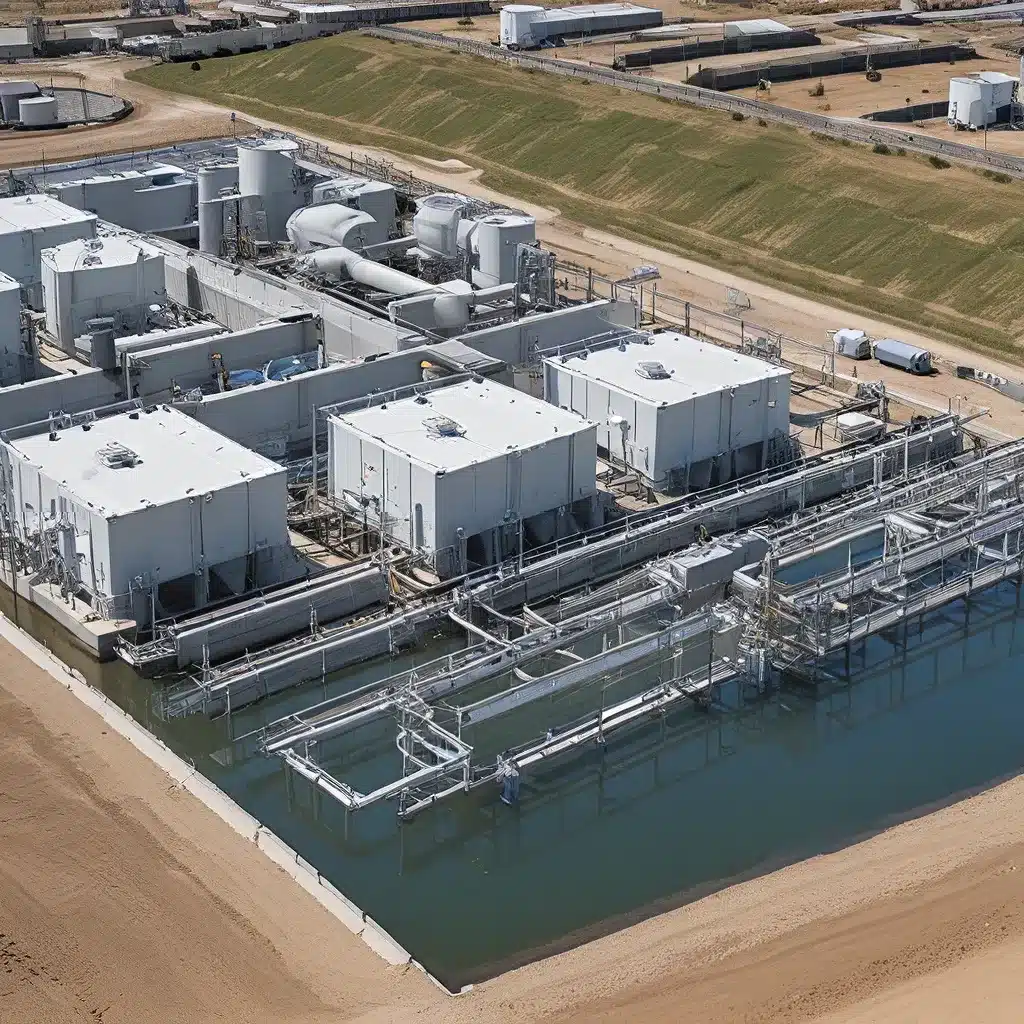
Adapting to a Changing Landscape
As I step into the bustling offices of Inland Waters, Inc., I can’t help but feel a sense of excitement for the future of water treatment. The industry is undergoing a remarkable transformation, driven by the ever-evolving landscape of environmental regulations and the increasing demand for sustainable, flexible solutions.
Gone are the days of rigid, one-size-fits-all water treatment plants. The future, my friends, is modular. And trust me, I’ve been exploring this topic with the same fervor as a kid hunting for buried treasure.
Embracing Modularity
In the not-so-distant past, water treatment facilities were like dinosaurs – massive, cumbersome, and resistant to change. But just as the dinosaurs gave way to more agile and adaptable species, the water treatment industry is undergoing its own evolutionary leap.
Civil engineers and industry experts are leading the charge, developing innovative modular designs that can adapt to shifting regulations and emerging technologies. These modular systems are like the Swiss Army knives of the water treatment world – versatile, compact, and capable of tackling a wide range of challenges.
Anticipating Regulatory Changes
One of the key drivers behind this modular revolution is the need to keep pace with the ever-changing landscape of environmental regulations. As Seven Seas Water observed, municipal water managers and industries are often tasked with providing water treatment services on a shoestring budget, while simultaneously navigating the complexities of compliance.
Imagine trying to hit a moving target while juggling a stack of ever-evolving regulations. It’s enough to make your head spin! But that’s precisely the challenge facing water treatment facilities today.
Flexible Solutions for a Fluid Future
That’s where modularity shines. These versatile systems allow water treatment providers to adapt and evolve alongside shifting regulations, without breaking the bank. Gone are the days of costly, inflexible infrastructure that struggles to keep up with the times.
Instead, water treatment facilities can now lease modular units that can be easily upgraded, expanded, or even entirely reconfigured to meet new requirements. It’s like having a water treatment Transformer – one minute it’s a sleek, compact system, and the next, it’s a hulking behemoth capable of handling even the most stringent regulations.
Sustainability and Adaptability
But modularity isn’t just about regulatory compliance – it’s also about sustainability and adaptability. As Seven Seas Water points out, the global population is growing, water resources are becoming increasingly scarce, and the demand for water treatment services is skyrocketing.
In this challenging environment, water treatment facilities need to be nimble, efficient, and ready to adapt on a dime. Modular systems allow them to do just that, scaling up or down as needed to meet the ever-changing demands of their communities.
Embracing Innovation
But the benefits of modularity don’t stop there. As Seven Seas Water highlights, these flexible systems also give water treatment providers access to cutting-edge technologies and innovative solutions. No more waiting years for the next big upgrade – with modularity, they can stay on the cutting edge, continuously improving efficiency and water quality.
Imagine a world where water treatment facilities are like sponges, constantly adapting and evolving to meet the demands of their communities. That’s the future I see, and it’s one that’s powered by the incredible potential of modular design.
Collaboration and Cooperation
Of course, this modular revolution isn’t something that can be achieved in a vacuum. It requires a collaborative effort between water treatment providers, civil engineers, and industry experts. And that’s exactly what I’ve been witnessing at Inland Waters, Inc.
The American Society of Civil Engineers has been at the forefront of this movement, bringing together leading minds in the field to tackle the challenges of a changing climate and its impact on water infrastructure. By sharing research, developing standards, and fostering open dialogue, these professionals are paving the way for a more sustainable, adaptable future.
Overcoming Obstacles
But it’s not all smooth sailing, of course. As with any transformative shift, there are bound to be obstacles and uncertainties along the way. Experts suggest that the path to adaptive, flexible regulations can be a complex one, with challenges around implementation, enforcement, and public acceptance.
But I firmly believe that the benefits of modular water treatment systems far outweigh the challenges. With the right mindset, the right partners, and the right innovative spirit, we can overcome these obstacles and usher in a new era of water treatment excellence.
The Future is Modular
As I wrap up my tour of Inland Waters, Inc., I can’t help but feel a sense of optimism for the future. The water treatment industry is on the cusp of a revolution, and it’s all thanks to the incredible potential of modular design.
By embracing flexibility, sustainability, and innovation, water treatment facilities can adapt to the ever-changing landscape of environmental regulations, ensuring that they remain at the forefront of their field. And with the support of civil engineers, industry experts, and forward-thinking companies like Inland Waters, Inc., I have no doubt that this modular future will become a reality.
So, let’s raise a glass to the water treatment facilities of the future – agile, adaptable, and ready to take on whatever challenges come their way. The future is modular, and it’s never looked brighter.


